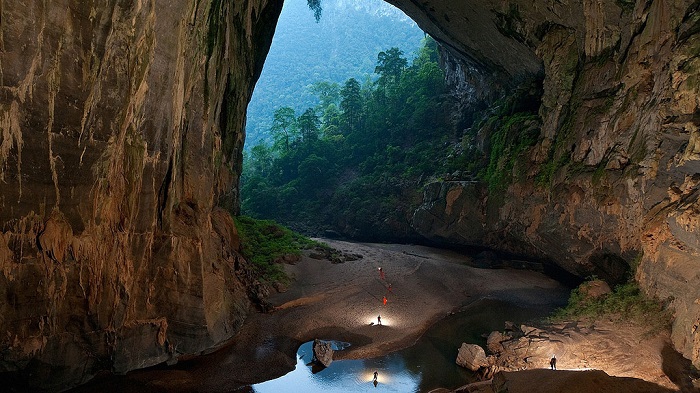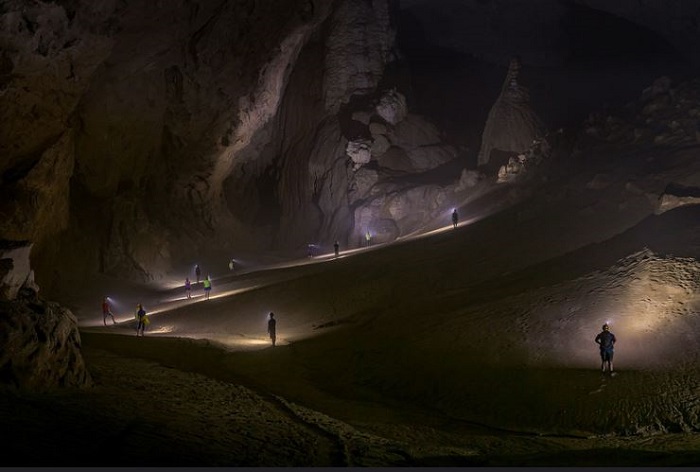There is an underground cave in the Phong Nha-Ke Bang National Park of Vietnam, which is known as the world's largest cave. The name of this world's largest cave is Hang Son Doong. In Vietnamese, the meaning of Hang Son Đoong is Mountain River Cave. It is one of the most spectacular sights in Southeast Asia. Phong Nha-Ke Bang National Park is situated in a limestone zone of 2,000 km2 in Vietnamese territory and borders another limestone zone of 2,000 km2 of Hin Namno in Laotian territory. The core zone of this national park covers 857.54 km2 and a buffer zone of 1,954 km2. Hang Son Doong cave was discovered by a local man named Ho Khanh in 1990. But Only in 2009 did the cave become internationally known after a group of cavers from the British Cave Research Association, led by Howard Limbert. No one had seen this cave before. Ho Khanh is a Vietnamese logger turned cave guide. It is said that in search of food and timber, Ho Khanh was wandering in National Park for several weeks in 1990. Suddenly he saw a cave in the park and went inside it. As soon as he entered the cave, he heard the voice of the river. He saw that a wide river was flowing out of it. Even he heard the sound of fast wind blowing inside the cave. Without any rope or gear, Ho Khanh did not venture further into the cave. He was scared and went away from there. Ho Khanh later gave up his logging job and return to farming with his family, but never gave up on the hope that one day he would find the cave again. After this he forgot this cave and never talked about it. After several years of this incident, a group of researchers from the British Cave Research Association came on a trip to find new caves in the Phong Nha Ke Bang region. During this time, the British Cave Researchers met Ho Khanh to know about his discovery of cave. The researchers team asked Ho Khanh for help. Ho Khanh agreed to guide the team to find the legendary cave.
But after many attempts, the researches team did not find the way to this cave. Ho Khanh also tried many times to find out the cave but he failed. In a final effort to recover his memory, Ho Khanh headed to the jungle one winter’s morning in 2009 and re-discovered Son Đoong, the name as it is known later. This time he also remembered the path of cave. The British team immediately came back to Vietnam and followed Ho Khanh. On April 14, 2010 they found what they were looking for. Since the discovery, Ho Khanh has been a guide for the team for many expeditions to explore caves in the area. Ho khanh is now a cave guide, conservationist and is running his own tour and catering business, Ho Khanh Homestay. According to Howard Limbert, the main Son Đoong cave passage is the largest known cave passage in the world by volume - 38.4×106 cubic metres. It is more than 5 kilometres long, 200 metres high and 150 metres wide. Its cross-section is believed to be twice that of the next largest passage, in Deer Cave, Malaysia. The government approved access to the cave system in June 2013. In early August 2013, the first tourist group explored the cave on a guided tour at a cost of US$3,000 each. Permits are required to access the cave and are made available on a limited basis. It is said that this cave is so large that it has its own river, forest and even its own separate weather. It is believed that there are bats, birds, monkeys and many other animals inside the cave.















0 comments:
Post a Comment